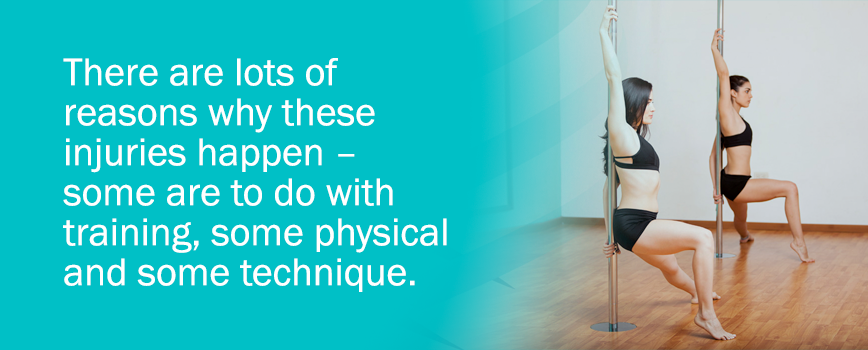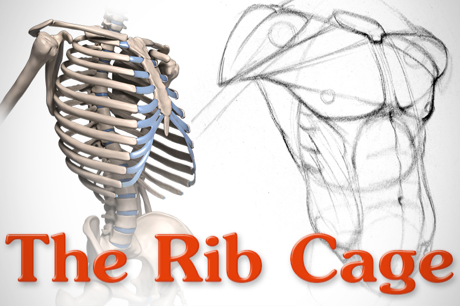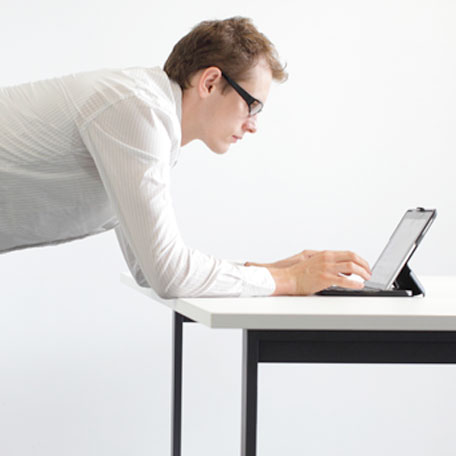
You know the feeling – you’re just starting to get somewhere, you’re on the pole and you’re finally doing more than just spinning! You’re starting to work on getting that straddle invert. Suddenly you’re working harder and more often as your skills improve, and then…
There’s that pain which will be familiar to many pole dancers – chest pain starting at the back as you drop out of your straddle. You’ve come down – you’ve felt a twinge between your shoulder blades or in your side, then the pain starts.
There are a number of different type of rib injuries that happen with pole dancing and aerials. Some, last a few days, some last weeks. Others can go on for months.
The importance of the correct diagnosis with someone who knows your injury and has a good depth of knowledge of pole dancer’s injuries, helps you understand the major questions: can you keep on the pole, what to do in the meantime and how long you will take to recover.
Comfortably numb – are there different types of rib pain?
Source: www.proko.com/anatomy-of-the-rib-cage-for-artists/
Is it a car – is it a plane? Is it a rib joint sprain?
The vast majority of ribs are attached both at the front and the back. The back of the rib attaches to the spine and the front joins onto the sternum via cartilaginous tissue that runs through the abdominal muscles and eventually onto the sternum.
Rib joints can be sprained or inflamed when the rib is compressed too hard from the side. This gives local pain just off to the side of the spine – maybe between your shoulder blades or slightly lower. It’s sharp – it’s local. It can start to spread around the side. It catches when you breathe – but you can still breathe through it.
Is it an intercostale muscle strain?
Between our ribs are little muscles – the intercostale muscles that help the ribcage expand to breathe and guide us through twisting movements – pulling the ribs around to make sure they’re in the right place at the right time. Injury to these muscles usually occurs either with lots of training, or one really big effort – it’s a sharp pain that really hurts to cough/sneeze and deep breathe: it catches you so badly you can’t really breathe through it. Twisting the rib cage hurts a lot and the pain is more diffuse. It hurts to turn over in bed. These take a few weeks to settle – the muscle needs to heal and be protected as it recovers its strength.
Stress reactions and bone bruises
Rubbing the ribs repeatedly on the pole in the wrong position can cause bone bruising. It’s not that you’ve done one move and come down wrong – it’s just built up over an entire term and continues to worsen. These are really rare – they take time and need an experienced team of people to ensure you reach your goals.
Costochondral strains
The soft cartilage connecting the front of the rib and the sternum can be sprained/irritated. A local pain right at the front of your rib which hurts every time you go to sit up or lift your legs. The soft cartilage at the front of the rib cage is made out of the same tissue as your ear lobe. These can take 2-6 weeks to settle.
So as you can see – there are a few main types of ribcage injuries – all that heal over different lengths of time. The biggest frustration I see in my office with these injuries – is when clients have been told to expect a fast recovery and the injury type has meant it will likely take many extra weeks.
Why why why why oh why?
There are lots of reasons why these injuries happen – some are to do with training, some physical and some technique. Knowing which of these is the problem helps solve that big question – why did this happen to me!!
Too much too soon?
Consistency and gradual increases in training are the best ways to avoid injury.
The number one reason we see these injuries is that students accelerate from a few hours per week to many more classes. Across multiple sports, including dancing, when you have sudden spikes of training load or intensity –the risk of injury increases. For example, if you were to suddenly double your number of training hours, your injury risk increases by more than 400%.
We also know that after a single week of a big spike of training the risk of injury is dramatically higher for as much as 4 weeks (even if you take it easy).
The take home message is – ramp up your training gradually. If you’re coming back from injury or a big break, start with just 1 or 2 classes per week.
Under pressure – your technique?
Copyright Sydney Pole
Positioning the pole
Each type of straddle needs to be started from a slightly different position. As you build strength, ensure you’re shoulders are set with your ribs comfortably positioned on the pole and that your hips are forward of the pole. If you’re trying to get a run up or your hips are behind the pole when you start you can bruise and compress them as your body position changes in the air.
Dropping out
Building abdominal strength is one of the key factors to reducing injury risk during dropping out. Lacking the strength to get your legs from vertical to the floor without flopping is one of the most commonly reported reasons for injury. Abdominal strength should be graded up consistently.
Physios look for endurance and control with dropping out.
If you feel
- your back gripping or pinching when you lower your legs to the ground
- you can’t lower them slowly
- your arms end up straight and you can’t keep them fully tucked and bent through the straddle
- your hips are clicking on lowering
- you can’t do 10 knee tucks to your chest
Then this may indicate that as part of recovery and prevention abdominal strength will be vital. A focus on abdominal strength must include: – power on the way up and endurance control on the way down. Some examples of exercises we try are:
- knees to chest
- knee to chest straddle lower
- tick-tocks
- double leg pike bent leg up/ bent leg lower
Hamstring flexibility
If your hamstring flexibility is limited as you start to straddle – it will mean that you have to curve your trunk more to achieve the full straddle. A good goal to reduce the load on the rib cage would be to ensure that you haveenough length in your hamstrings to lift your leg vertical to the ceiling when lying on your back
Too many on one side
Now we all know it’s difficult to be strong in straddles on both sides. At the fundamental levels it is important to spend time working to achieve as much strength symmetry as you can. You’re more likely to get sore if you only practice one side, as this leads tooverworking only one set of muscles, and creates asymmetry across the rib cage. Practising on both sides buildsup muscles evenly across the back and protects the ribs from the rotational forces involved.
The twist doesn’t help and this is unique to pole
There is almost no other type of aerial act that involves so much rotational force – so few pole moves are done without twisting around the pole to some degree. It’s a challenge – we can’t change the pole – but being as strong as we can on both sides certainly helps to prevent issues.
What to do about it?
- Are you sure what kind of rib injury it is?
- Can you rest without really resting it?
Going to a physio who knows a lot about pole dancing means that you will avoid hearing the frustrating, but common phrases: ‘why would you do that?’, or worse, ‘you should give up pole dancing, it’s not good for you’. In fact, any physio who knows pole will generally be advising as much movement and activity as possible without completely stopping.
At Kinetica Physiotherapy our experienced therapists know pole. Our approach is to settle your acute pain quickly and work together with your teachers to help you build the foundational strength required in order to prevent it recurring. Remember:
- Strong shoulder setting and rib cage position
- Long and strong hamstrings
- Strong hip flexors that work with your abdominals to get you up in the air
- Exceptional shoulder strength – ensuring a great working position for your shoulder blades
- Gradual and carefully monitored return to pole to avoid injury recurrence
A few points to note:
- This information may not be valid for each individual’s circumstance and does not replace advice given by a health professional
- There are rare but serious other conditions that mimic the experience of rib and muscle related chest pain. If you are in significant discomfort or have pain that rapidly worsens (particularly without a cause) seek urgent medical attention.
- Night pain that has an unexplained cause or chest pain that comes on gradually need to be thoroughly investigated


